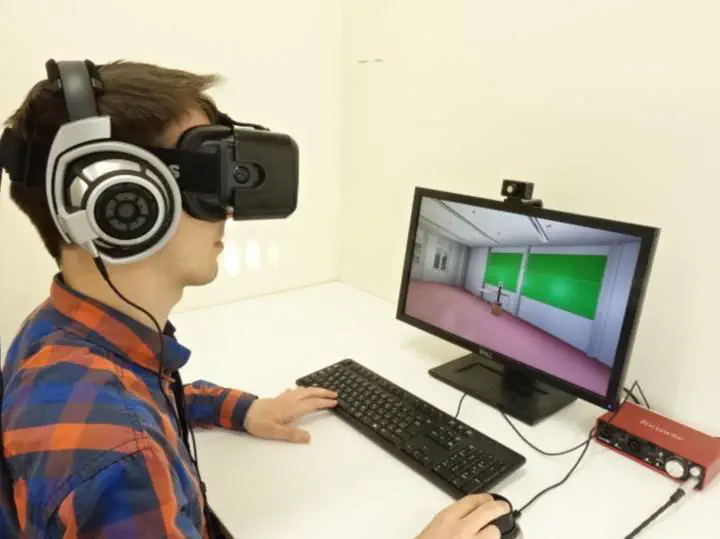 Image credit: Unsplash
Image credit: Unsplash
Abstract
Recent work has shown that distance perception in virtual reality is different from reality. Several studies have tried to quantify the discrepancy between virtual and real visual distance perception but only little work was done on how visual stimuli affect acoustic distance perception in virtual environments. The present study investigates how a visual stimulus effects acoustic distance perception in virtual environments. Virtual sound sources based on binaural room impulse response (BRIR) measurements made from distances ranging from 0.9 to 4.9 m in a lecture room were used as auditory stimuli. Visual stimulation was done using a head mounted display (HMD). Participants were asked to estimate egocentric distance to the sound source in two conditions: auditory with GUI (A), auditory with HMD (A+V). Each condition was presented within its own block to a total of eight participants. We found that a systematical offset is introduced by the visual stimulus.